Table of Contents
Why Is My Car Overheating? Real Case Study in a Mercedes-Benz C350e (M274 Engine)
Engine overheating is one of the most alarming problems any Mercedes owner can face. It often appears suddenly without leaks or dashboard warnings and can quickly lead to major mechanical damage if ignored.
In this real-world case study, we diagnose and repair a Mercedes-Benz C350e equipped with the M274 engine that suffered from persistent overheating even though the coolant level and radiator fan appeared normal.
By the end, you’ll understand how a simple but hidden fault a stuck thermostat was the true cause behind the issue.
For more case-based troubleshooting and cooling system repair tips, visit our main hub: Mercedes Cooling System Problems Guide: Troubleshooting
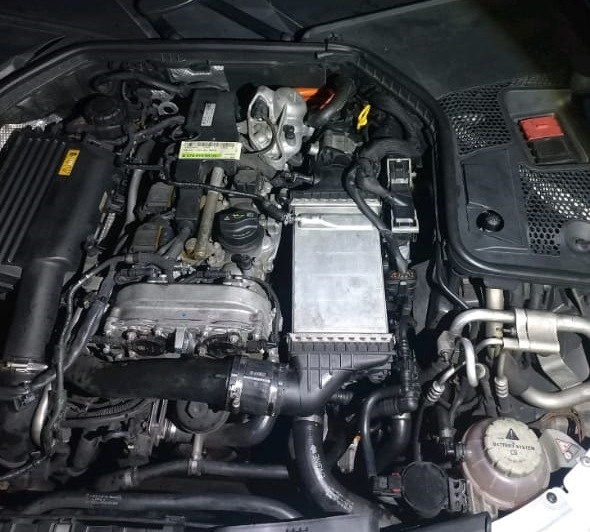
Customer Complaint: Engine Overheating with No Visible Coolant Loss
The owner of a Mercedes-Benz C350e (M274 engine) reported that the vehicle’s temperature gauge was climbing into the red zone after just a few minutes of driving.
Key observations:
- – Coolant level was correct.
- – Radiator fan activated normally.
- – No external leaks or steam were visible.
Despite these signs of normal operation, the engine continued to overheat after reaching standard operating temperature requiring immediate investigation.
Step 1 : Systematic Diagnostic Process
The technician followed a structured diagnosis to identify the root cause of the overheating problem.
Coolant Level & Pressure Test
- – The coolant reservoir was filled to the correct level.
- – A pressure test showed no external leaks from hoses, the water pump, or radiator.
Radiator Fan Operation
- – Verified through live data that the radiator fan activated at the correct temperature.
- – Ruled out fan relay and control module failure.
Water Pump Inspection
- – The C350e uses an electric water pump. Using XENTRY diagnostics, the technician commanded pump activation it responded normally, confirming it was working.
Radiator Hose Temperature Comparison
- – The upper radiator hose was hot.
- – The lower hose remained cold.
This indicated a lack of coolant circulation through the radiator, a classic sign of a stuck thermostat.
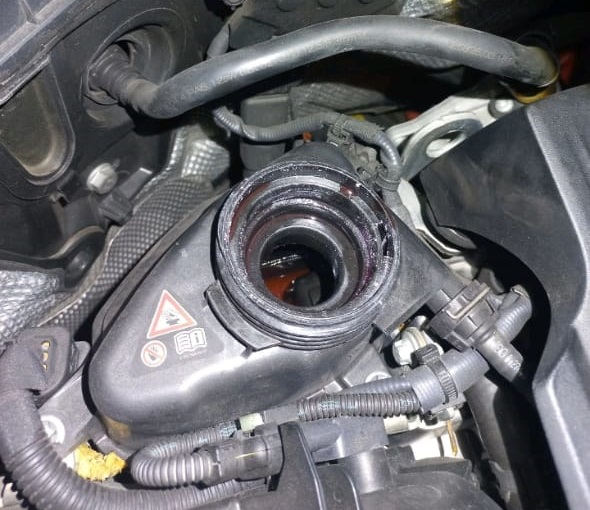
Step 2 : Pinpointing the Root Cause; Faulty Thermostat
Even with the water pump and fan functioning, a thermostat stuck in the closed position will prevent coolant from circulating between the engine and radiator.
This leads to:
- – Coolant trapped in the engine block.
- – Rapid heat buildup.
- – Overheating even at idle or light load.
Upon removing the thermostat housing, the technician discovered that the thermostat valve was jammed shut, confirming the root cause.
Step 3 : Repair Procedure
Thermostat Replacement
- – The defective thermostat was replaced with a genuine Mercedes OEM part to ensure precise opening temperature and durability.
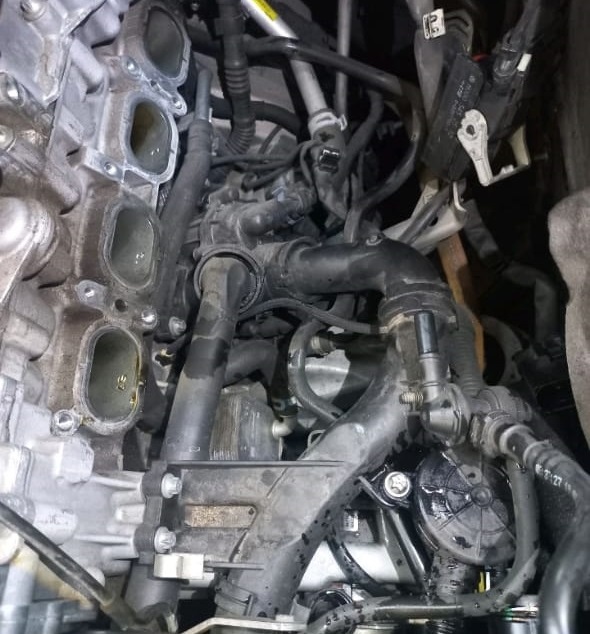
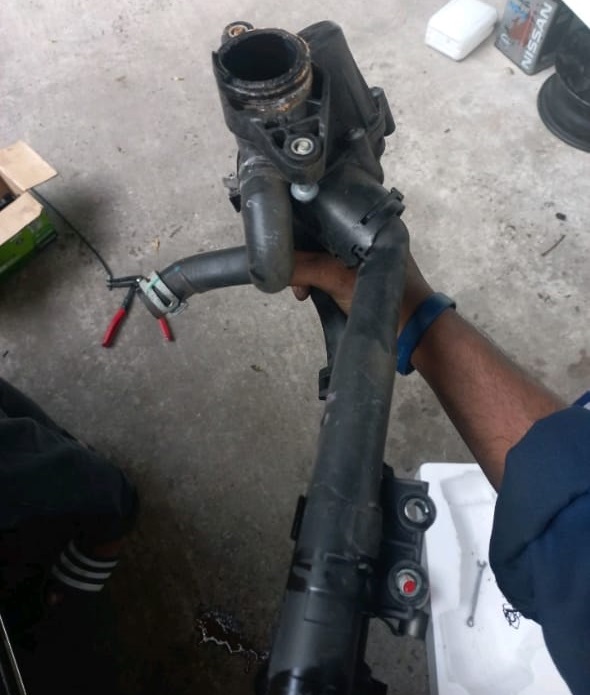
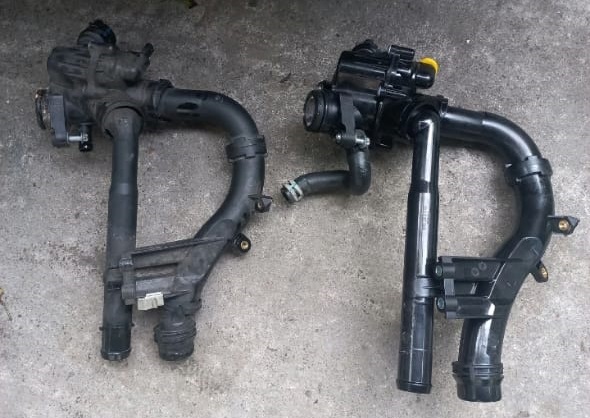
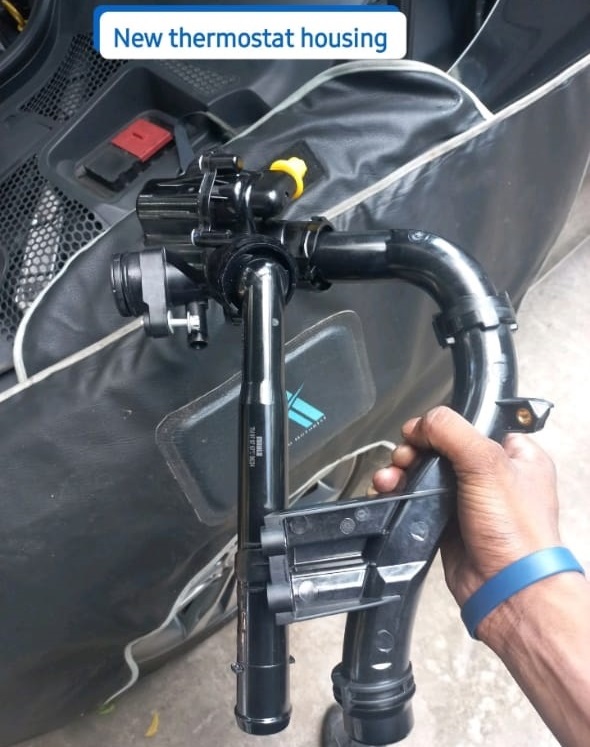
System Bleeding & Refill
- – The cooling system was bled thoroughly to eliminate trapped air pockets.
- – The coolant reservoir was filled with the correct Mercedes-Benz specification coolant mixture.
Verification & Testing
- – After repair, the engine was started and allowed to reach operating temperature.
- – Both radiator hoses warmed evenly, indicating restored coolant circulation.
- – A test drive confirmed stable engine temperature under all conditions.
Result: The overheating problem was fully resolved.
Step 4 : Technician Recommendations
After resolving the issue, the workshop provided these key recommendations:
- – Recheck coolant level after 24 hours air may escape as the system settles.
- – Use only Mercedes-approved coolant (MB 325.0 or equivalent) to prevent corrosion and scale buildup.
- – Replace thermostats proactively every 80,000–100,000 km, especially in hybrid or turbocharged engines like the M274.
Case Study Summary
| Component Tested | Result | Diagnosis |
|---|---|---|
| Coolant Reservoir | Full, no leaks | OK |
| Radiator Fan | Operational | OK |
| Electric Water Pump | Working (XENTRY test) | OK |
| Radiator Hoses | Uneven temperature | Fault indication |
| Thermostat | Stuck closed | Fault found |
FAQs: Why Is My Car Overheating?
What are the common causes of engine overheating?
Engine overheating in Mercedes-Benz vehicles can result from several factors within the cooling system.
Common causes include low coolant levels, leaks in hoses or the radiator, a faulty thermostat stuck closed, or a failing water pump preventing coolant circulation.
Other causes can be a clogged radiator, inoperative fan, or air pockets trapped in the system.
It’s important to diagnose overheating promptly, as continued driving under high temperature can lead to warped cylinder heads or a blown head gasket.
Can a bad thermostat cause a car to overheat?
Yes, a bad thermostat is one of the most frequent causes of engine overheating.
When the thermostat sticks in the closed position, it prevents coolant from flowing to the radiator.
This causes heat buildup inside the engine, even if the coolant level and radiator fan are normal.
A quick way to confirm this fault is by checking the temperature difference between radiator hoses: if one hose is hot and the other stays cold, the thermostat is likely stuck closed.
How do I know if my water pump is working properly?
To check your water pump’s condition, observe the engine temperature and coolant flow.
A properly working pump will allow coolant to circulate once the engine warms up.
Signs of a failing water pump include overheating, coolant leaks near the pump housing, or grinding noises from the engine bay.
For vehicles like the Mercedes C350e with an electric water pump, you can use a diagnostic tool (such as XENTRY) to activate the pump and verify its operation.
Why is my car overheating but the coolant is full?
If your Mercedes is overheating despite a full coolant reservoir, the issue likely involves poor coolant circulation or heat dissipation failure.
Possible causes include a stuck thermostat, faulty water pump, air trapped in the system, or a blocked radiator.
Other culprits can be a failing fan relay or a coolant temperature sensor sending incorrect readings to the ECU.
Even with enough coolant, the engine can overheat if the fluid isn’t moving or cooling efficiently.
Can I drive my car if it’s overheating?
It’s not safe to drive a Mercedes or any vehicle while it’s overheating.
Continuing to drive can cause severe engine damage, including blown head gaskets, warped cylinder heads, or even engine seizure.
If the temperature gauge enters the red zone or you see a “Coolant Temperature High” message, pull over safely and shut off the engine immediately.
Allow the engine to cool completely before checking coolant levels or calling for roadside assistance.
Conclusion: Don’t Overlook the Thermostat
This case study proves that even when your coolant level and radiator fan appear normal, a faulty thermostat can silently cause catastrophic overheating.
If you notice:
- – Hot and cold radiator hoses,
- – Rising temperature after a few minutes of driving, or
- – Steam from the expansion tank without leaks
then a stuck thermostat should be one of the first suspects.
Prompt replacement and proper system bleeding can restore your cooling system’s performance and prevent expensive engine damage.
For more expert-led guides and real Mercedes repair examples, visit the main hub: Mercedes Cooling System Problems Guide: Troubleshooting
Author
Written by: Mercedes Expert
Automotive Technical Trainer & Mercedes-Benz Diagnostic Specialist
With years of hands-on experience repairing and diagnosing Mercedes-Benz vehicles, specializes in case-study-based troubleshooting guides that blend workshop accuracy with educational clarity.
Last Updated: November 2025

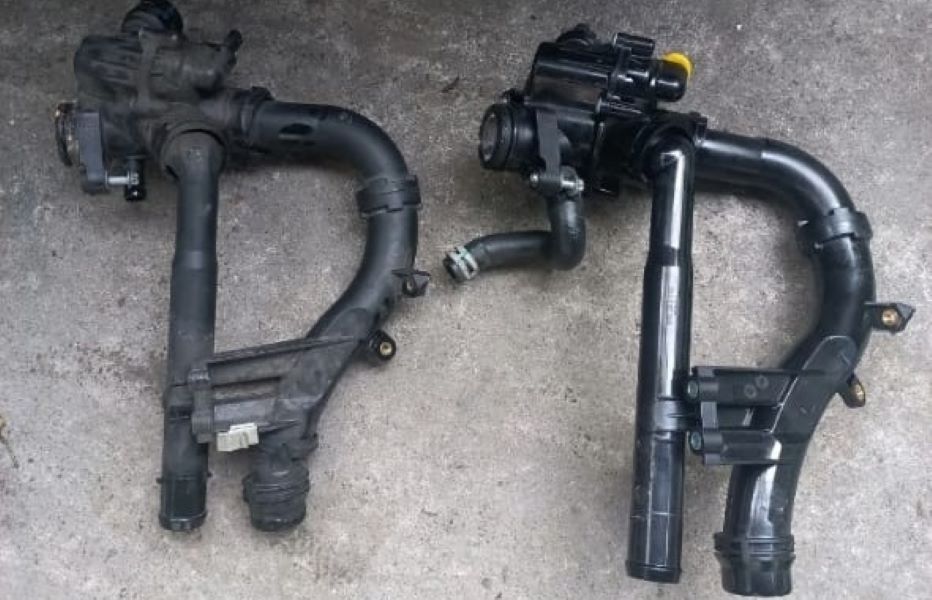



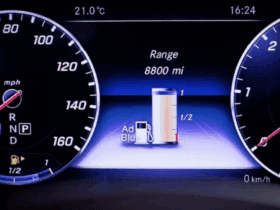
Leave a Reply